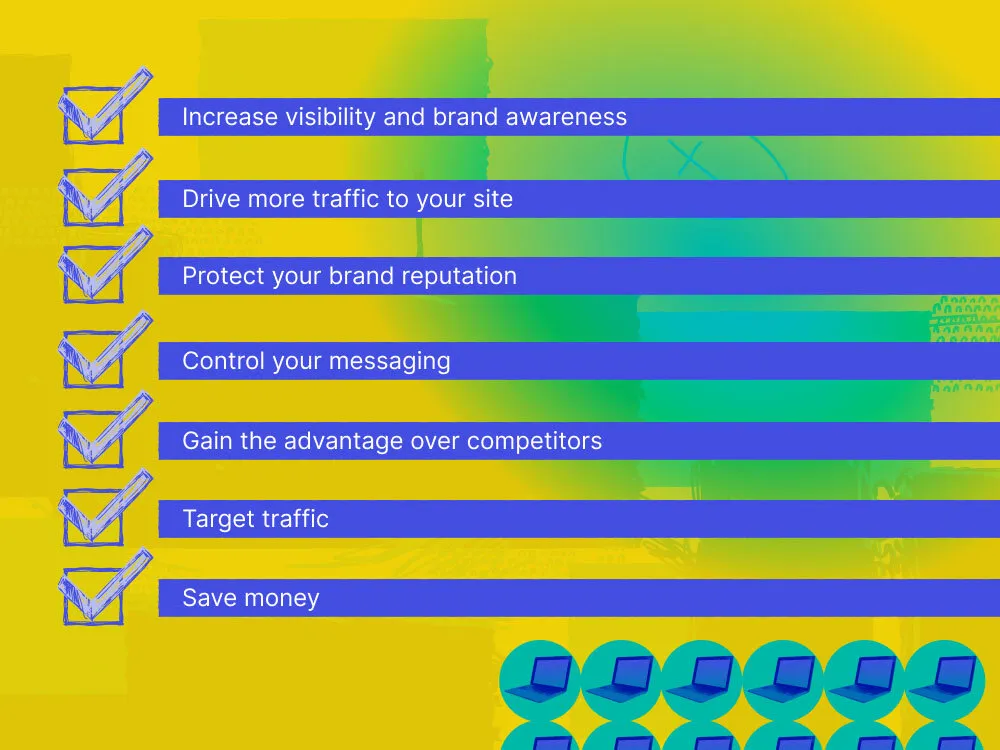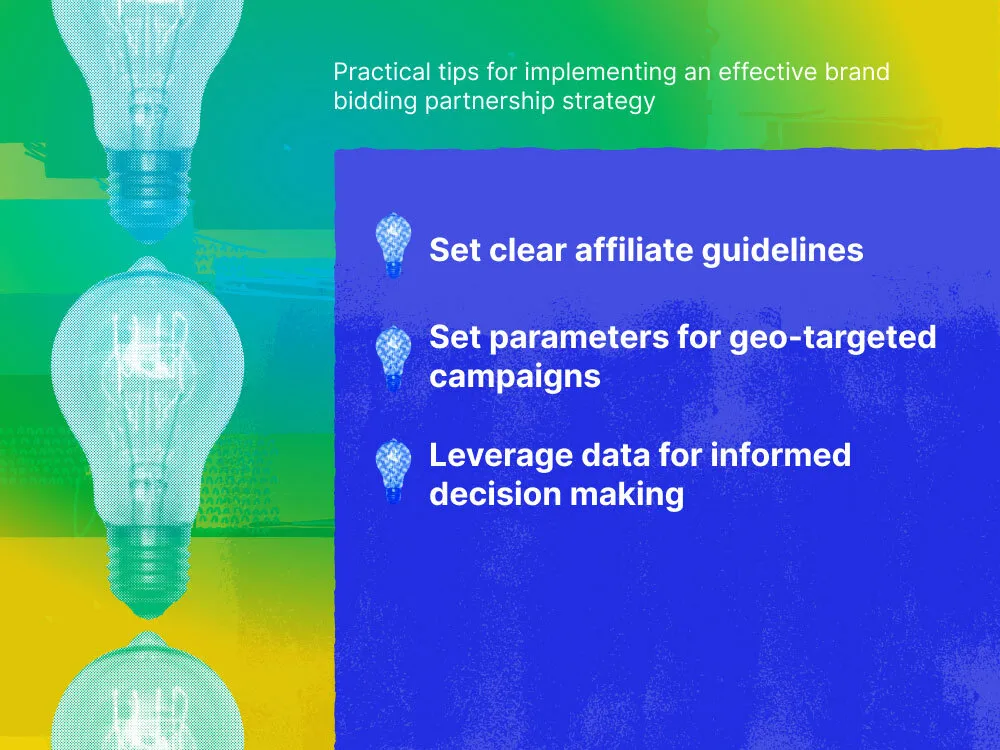More than 50 per cent of shoppers use Google to discover or find a new brand. This means that getting your brand to the top of the search engine results page (SERP) can mean new and continued business from loyal customers.
Brand bidding goes a long way toward making this happen. To take this approach one step further, when you practice brand bidding with your affiliate partners you might just be able to crowd out the competition entirely.
Let’s review what that might look like for your brand.
What is brand bidding in PPC?
Tommy Albrecht, Head of Performance at Funnel, explains that, “brand bidding is exactly what the term implies: it is buying branded keywords. In short, advertisers bid on specific queries that users are searching for and whenever someone makes that search, an auction happens. It is the buying of keywords associated with either well-established brands or competitors.”
A good example would be a software company bidding on the search term “Salesforce Security” or “Oracle Cloud.” Then, when users search for those terms, the software company link will pop up as well. They can include information that differentiates them from Salesforce or Oracle to basically poach potential customers of those brands.
Albrecht reminds us that brand bidding should also include bidding on your own brand term. In theory, your brand should be the first organic search result, but if you know your competitors are bidding on your brand, you can bid on your own brand as a defense tactic.
Defending your brand in a competitive SERP landscape
There are many strategies for defending your brand against competition on the search results page, especially if your business has a name similar to others or you’re marketing in a flooded market. Brand bidding can be a highly effective way to maintain a competitive edge.
Benefits of brand bidding as a vendor
When you bid on your own brand name, you can:
- Increase visibility and brand awareness: Organic search rankings are less stable than paid ads. Algorithm changes, competitor SEO moves or even slight shifts in user behavior can affect where you show up in SERP. Brand bidding gives you a degree of control over your visibility that organic SEO simply can’t guarantee.
- Drive more traffic to your site: When you’re at the top of the search page, you’re more likely to get more clicks to your site.
- Protect your brand reputation: Controlling what users see when they search for your brand ensures competitors aren’t poaching your clients.
- Control your messaging: Paid ads let you customize the message far more flexibly than organic listings do. Whether it’s a seasonal promotion, a new product line or a unique offer, paid ads allow you to deliver specific, time-sensitive messaging.
- Gain the advantage over competitors: Brand bidding allows you to crowd out the market and own top SERP real estate.
- Target traffic: Bidding on your brand ensures your targeted audience can find you easily when they search for you.
- Save money: Targeted keywords are typically much less expensive in PPC ads than generic keywords because there’s not a lot of competition in the “bidding wars.”

You might also like: The GTM trends to watch for in 2025.
Why SaaS brands should create partner brand bidding strategies
Once you get familiar with brand bidding and understand the benefits therein, it’s a natural progression to move into affiliate brand bidding. As Tyler Calder, CMO of PartnerStack notes, “Partnerships can turn brand bidding from a solo act into a multi-pronged approach, expanding reach and driving more impactful results.”
Why? Because when an affiliate partner bids on your brand, you cover a lot of SERP real estate. Here are the top reasons to create partner brand bidding strategies.
Maximize visibility without cannibalizing traffic
One of the big concerns with brand bidding is that you’ll cannibalize your own traffic. Users might already be searching for your site and fully intend to click on your link. So, if you pay for your own brand keywords, you won’t really be getting new traffic. You’ll be paying for organic traffic you would’ve gotten anyway, “stealing” clicks away from yourself.
Calder notes, “Clear agreements with affiliates are essential to avoid bidding wars that drive up your costs.” He advises establishing whether your affiliate partner should target slightly different keyword variations or bidding strategies to minimize overlap.
Compete with affiliates rather than competitors
There’s no getting around it — SaaS is a highly competitive market. You’re going to be competing with other businesses. But if you work with affiliate partners to increase visibility on your brand, your “competition” will be people you’re already working with.
For brands in crowded markets, where competitors are aggressive, brand bidding is less about incremental traffic and more about brand defence.
This “competition” can become a collaboration instead — an affiliate program. You can have guest posts on their sites and have them link to your pages. This way, you stand to gain new clients that will appreciate your business, since 89 per cent of B2B buyers use review sites to inform their purchasing decisions.
Best practices for optimizing brand bidding in paid ads
Now, how do you get started brand bidding within an existing affiliate partnership program?
Coordinate SEO and PPC teams for maximum impact
Get your SEO and PPC teams together with those of your affiliate partners. Make sure both teams understand the goals and are aligned in their strategies.
SEO and PPC teams should work together to align keyword strategies, particularly for high-intent, brand-specific keywords. Regular communication can help avoid conflicts and ensure that organic and paid efforts support each other.
For example, if SEO efforts are focused on ranking for a new product term, PPC could reinforce that visibility by bidding on those same terms to enhance the brand’s dominance on the results page.
Use PPC insights to inform SEO
Monitor your PPC activity to see what’s working and what’s not. If your affiliate partner’s copy or your own needs adjustment, be ready to pivot. Remember, the goal here is not just to get visibility, but to get clicks, leads and sales.
Create content that supports paid search intent
Speaking of your copy, the content that pops up with the search must inform the user why your brand is better, easier, cheaper or will meet their needs in some unique way. You should create copy that supports the search term so you can build brand trust and loyalty.
As Brian Schmidt, Director of Paid Search at 829 Studios recommends, “Create clear and compelling ad copy that highlights what makes your organization unique. We also recommend utilizing as many applicable and relevant ad asset options.”
You’ll also want to align landing pages and site content with the intent behind brand-bidding keywords. The customers who click on these ads should find content that matches their expectations, whether it’s product details, testimonials or promotions.
This approach will not only improve conversion rates but also enhance the overall customer experience by delivering exactly what users are searching for.
Set up comprehensive brand monitoring
One of the most important steps to take in this partnership is high-level monitoring of all the relevant data. Watch who’s clicking what, when and why. Treat this entire process as an ongoing test that you’ll need to adapt and adjust as you go.
Be sure to use tracking tools to measure incremental increases in traffic, conversions and revenue from brand bidding. Google Ads and other platforms often provide insights into where traffic originates and whether paid ads capture additional clicks.
Distinguish between incremental traffic (new visits that wouldn’t have happened otherwise) and shifted traffic (users who would have clicked on your organic listing). This can be done with A/B testing, comparing traffic in regions where brand bidding is active against regions where it isn’t. It’s also a great opportunity to leverage partnerships.
See more: Marketing channels to expand your business reach beyond Google.
Measure incremental impact and ensure ROI
Take even the smallest jumps in visits and sales as positive and keep doing more of what’s working while shifting away from what’s not. This approach will ensure you get a positive ROI.
Brand bidding can sometimes increase the average CPC if affiliates or competitors are also bidding on the brand name. Set thresholds for acceptable CPC and adjust bids if the cost begins to outweigh the incremental gain.
Experiment with different types of brand bidding campaigns — testing various messaging, target demographics and geographic focuses — to determine which configurations yield the highest ROI.
Practical tips for implementing an effective brand bidding partnership strategy
To get the most out of this strategy, follow these helpful tips.
Set clear affiliate guidelines
When you get together with your partners, make sure the guidelines are clear, that both teams are on the same page and that you have standards and rules for brand bidding. It’s critical that you both agree to adjust and adapt strategies as needed to maximize your growth potential.
Clear agreements with affiliates are essential to avoid bidding wars that drive up your costs. Establish whether your affiliate should target slightly different keyword variations or bidding strategies to minimize overlap.
Calder reminds us to “define which keywords are off-limits for affiliates, set maximum bid limits and specify any ad copy requirements to prevent brand messaging dilution.”
You might focus your ads on brand-level messaging while affiliates zero in on specific product offers, promotions or unique incentives. This multi-layered approach adds depth to your brand presence and offers different entry points for prospective customers.
For example, if your brand ad focuses on brand awareness and credibility, an affiliate ad can highlight a discount or unique product feature, appealing to customers at different stages of their purchasing journey.

Related: What the Google algorithm updates mean for partnerships.
Set parameters for geo-targeted campaigns
As Calder says, “Geo-targeting is a powerful strategy for segmenting brand bidding campaigns. One potential test involves assigning certain geographic areas to affiliates while keeping others for the brand’s direct campaigns. This A/B approach allows you to measure incremental value without creating head-to-head competition.”
For instance, assign one city to your brand bidding efforts and a nearby city to an affiliate and compare the results. This lets you assess if there’s real incremental value in affiliate bidding versus brand-only ads.
Leverage data for informed decision making
Keep the partnership rooted in firm data and draw on all the insights you can. Before beginning, ensure both parties agree to make the best decisions about brand bidding based on data.
Track performance meticulously, analyzing how brand bidding affects both organic and paid metrics. Pay attention to incremental lift in traffic, conversion rates and cost-per-click. This data-driven approach will give you a clearer picture of brand bidding's value.
Test different ad formats (text, image, video) and placements (mobile vs. desktop) to see which performs best with your audience.
Crafting a brand bidding strategy that drives real results
Brand bidding isn’t just about owning your space on the SERP; it’s about using that space strategically to drive measurable outcomes. When executed with careful planning and a partnership-friendly approach, brand bidding can provide a competitive edge and incremental value.
By coordinating with affiliates, analyzing ROI through geo-based testing and integrating with your SEO strategy, you create a brand bidding framework that works for the brand rather than against it. Remember: the goal isn’t just to own your brand keywords in paid search but to turn those clicks into profitable, incremental traffic that drives long-term growth.
As Calder sums it up for us, “There may be an impulse that brand bidding might be bad, or that there’s not a ton of value because the loudest voices in that space say so, but we need to challenge those voices.
“When you hear best practices, you can use them as a great starting point, but you should always put a process through your own vetting process. Trust your own gut instincts based on facts you can collect, not just what others say.
He shares one final piece of advice: “And in this particular instance, it’s so easy to just go collect the data yourself.”
.webp)
















